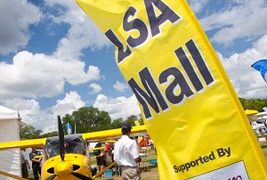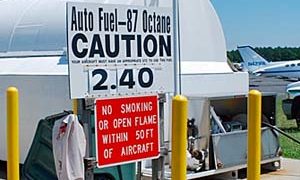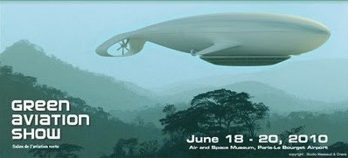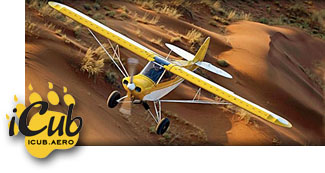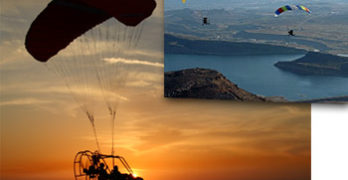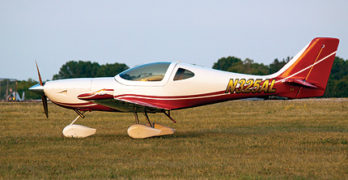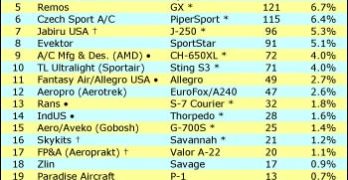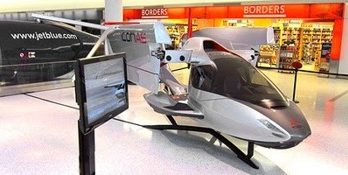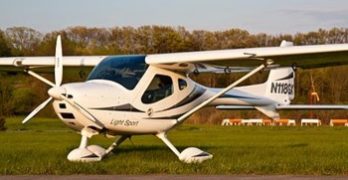News began filtering out today that FAA informed LAMA (Light Aircraft Manufacturers Assoc.) that it is strongly considering imposing new mandates on how S-LSA designs are approved. *** LAMA chairdude Dan Johnson sent a strong message to LAMA members that FAA may require LSA makers to pass compliance audits managed by a team of FAA inspectors, rather than the manufacturer-certified voluntary nature of the certification program as it now exists, where airframe builders can pay for an audit through LAMA, but are not required to do so. *** Earl Lawrence of EAA talked in depth about this development on the Ultraflight radio program Tuesday July 13th; check their archives to hear the full interview. I appeared on the radio show later in the program to talk about the state of the industry and what’s coming with electric LSA. *** I also got more info from Dan on what this portends for the S-LSA industry as a whole.
Search Results for : flight design ct
Not finding exactly what you expected? Try our advanced search option.
Select a manufacturer to go straight to all our content about that manufacturer.
Select an aircraft model to go straight to all our content about that model.
Why the Raging Avgas Debate?
Have you missed the great debate raging over the impending demise of 100LL? Many leading groups — including AOPA and apparently EAA plus others such as the Green 100 Octane Coalition — have endorsed a one-size-fits-all solution. *** But, hey! One size does not fit all. Light-Sport owners are aware their aircraft can operate just fine on 91 octane (premium) ethanol-free gasoline. The same can be said for 70%-80% of all piston-engine aircraft in the U.S. Indeed, more than 60,000 Autogas STCs have been granted from EAA and Petersen Aviation but such added approvals aren’t needed by LSA powered by Rotax or Jabiru. *** Leading aviation alphabet groups show little support for the installation of ethanol-free Mogas pumps at GA airfields. One wonders why? Several benefits follow increased use of E-zero (E0) Mogas: * It’s ideal for the vast majority of American aircraft including virtually all new LSA designs; * It would lead to an immediate reduction in the use of leaded fuels and its impact on the environment; and, * Switching from 100LL to Mogas would dramatically reduce the cost of flying for sport aviators and to flight schools adding LSA to their fleets.
Paris Green Air Show
A couple days ago I promised to follow up on the Paris Green Air Show so here we go. *** The show is held (2010 is the 2nd year) at the Musee Air + Despace, at Le Bourget airport, the field where Charles Lindbergh landed the Spirit of St. Louis and where the huge Paris Air Show takes place every other year (next up in 2011). *** It’s mission statement is implicit from the phrase on the evocative splash drawing: “L’aviation du futur”. It took a bit of digging and some web translations to find out more about the show that Gizmag first posted about the other day. *** The explosion of imaginative designs and concepts at the show is staggering: very much like the first years of aviation after 1903. Dirigibles large and small, including man-powered balloons; aircraft engines with zero CO2 emissions; aircraft powered by electric, solar and hydrogen fuel cell engines; noise and pollution reducing sustainable development concepts for airports, runways and aircraft “villages.” All in all, quite a hoot; I’d love to go to the next one.
“We’ve Got a Plane for That!” …iCub
SportairUSA, run by proprietor Bill Canino, has long been an innovator in the LSA business. His company doesn’t build Light-Sport airplanes but Bill has triggered several interesting add-ons: he was one of the first (along with Flight Design USA) to install parachutes on all StingSports; he developed the GreenLine engine monitor system, he offered the Straight & Level button to help those caught unexpectedly in no-visibility conditions; and last year at AirVenture he rolled out the ForeSight enhanced visibility system… and this list is not exhaustive. *** For AirVenture 2010 just six weeks away, he’s got a whole new concept. First is iCub. Previously distributed under the model name Savage (still retained for some models), the sorta-Cub-like taildragger manufactured by the Zlin company of Czech Republic will now be distributed by SportairUSA, adding to their low-wing Sting series and their high-wing Sirius , both built by TL Ultralight in Czech.
Predator Powered Parachute… & Immersion Training
Another one managed to slip by my radar. I follow LSA closer than most yet I can barely keep track of all the approvals. No wonder I frequently get calls asking me to unravel the puzzle of LSA makes and models. *** Better late than never, welcome the Predator powered parachute to our SLSA List of 108 models from 72 still-active companies (at least five have left the business). Scott Hughes is the original designer & creator of the Predator. *** New CEO Fredrick Scheffel wrote, “On April 22, 2009, SkyTrails LSA (Predator Powered Parachute LLC) purchased the rights to manufacture the Predator along with the tooling & inventory from Hughes Aero.” SkyTrails LSA moved into the hangar facilities where Hughes Aero had been building the Predator for the past four years. Scheffel further noted, “SkyTrails Ranch, Inc., is a long standing name in powered parachute training, sales, and service that [has now] expanded into powered parachute manufacturing.” *** National powered parachute expert, Roy Beisswenger confirmed the Predator as a Special LSA, “SkyTrails LSA is manufacturing ELSA & SLSA aircraft at the airport in Wharton, Texas.” *** Learning to fly a powered parachute can be challenging.
Arion Lightning LS-1: Smokin Lightning
An all-American speedster that flies as fast as the law allows
The first one I saw was gorgeous, even bare of paint accents. That Arion Lightning prototype looked undeniably smooth and, well, fast as lightning. Pilots are inspired by lovely flying machines, and on the factory ramp in Shelbyville, Tenn., was one of the most fetching examples of an LSA I had ever seen.
Arion Aircraft’s Lightning LS-1 (www.flylightning.net) isn’t new. Indeed, in three years, the company has sold 80 kits, and 40 already are flying. Now comes a ready-to-fly airplane, an all-American flying machine that’s able to hit the LSA max speed of 120 knots (138 mph). The Lightning’s smokin’ fast speed, however, is just one measurement of its appeal.
Wherever it goes, the Lightning gathers admiring glances. That’s no surprise, as it’s an amalgam of the former Esqual from Spain with touches of Van’s RVs, the Aerospool Dynamic, various Lancair models and the also-Spanish Toxo LSA-each as shapely as a fashion model.
First Third of 2010 Even Slower than 2009
Sun ‘n Fun was a bright spot for the light aircraft industry as more than 20 sales appeared likely or were consummated. Yet anecdotal reports about generally sluggish sales were confirmed in a recent review. At least until Sun ‘n Fun, Light-Sport Aircraft FAA registrations show 2010 was even slower than a tough 2009. Last year, the industry registered 234 airplanes (plus weight-shift and powered parachutes yielding approximately 275 total LSA of all types). That’s more than 20 airplanes a month, yet 2010 appears to have slowed to around 15 per month. Those figures compare with about 45 per month back in 2006 and 2007. *** Why? No one has a crystal ball, but common suspects are: * an oscillating stock market causing hesitation among would-be buyers; * government budget problems, both in Europe and in the U.S.; * a still-stagnant housing market; and, * a widely-held feeling that LSA are still proving themselves, both for the certification method and many unfamiliar brands especially when the latter affects perceptions of customer service.
ICONographic Marketing
I thought I’d share a couple interesting videos recently posted on the Icon Aircraft website. There’s a multimedia gallery of high-profile, appealing eye candy, including YouTube videos chronicling various aspects of the ongoing test program for the company’s A5 amphibian S-LSA. *** Two I found particularly interesting: a stall sequence and a potpourri of recent flight test ops. *** First, the stall sequence shows the classic tufted airflow indicators taped to the wing to demonstrate inflight stall progression from the root outward. *** Watch the tufts near the root begin to wiggle and change direction first, demonstrating loss of lift. Then see the stall move outward from the root and along the trailing edge. To my eye, it seems like the middle of the wing completely stalls before the root. I’d like to know about the aerodynamic significance of that, and why the wing doesn’t stall more classically at the root first.
Sympathy Flying
Michael Combs’s epic Flight For The Human Spirit odyssey just made it into Chicago a few hours ago after a whirlwind tour of the Northeast (he just missed some premature, summery 90-degree weather — and nasty thunderstorms). *** Since Michael’s flying a new Remos GX, I thought to make a sympatico gesture by taking the air in the same type, and, I confess, to prep my flight report for the July print issue of P&P. *** BTW, Tom Peghiny, Prez of Flight Design, told me recently he was in the dark whenever I wrote “dead tree P&P”. (I guess he doesn’t read Time magazine online, they say “dead tree Time” all the, uh, time.) Alas, in deference to Tom and others similarly not conversant in super-hip online lingo, I must abandon journalistic trendiness in favor of humdrum journalistic clarity.) *** Anyway, with many thanks to Ron Glazer of Remos (and Marketing Veep Ken Weaver, who sent him up) for making an extra leg to meet me, I finally got my chance to fly the bird. *** Ron flew the 2010 Remos GX Aviator II (full panel version) into Great Barrington Airport (GBR) in Massachusetts — one of God’s little aviation secrets, shhh!
New Purpose-built LSA
Another LSA (and another from Czech Republic!) is about to land on our shores. It’ll be featured in my Cool Stuff overview story in the June issue of P&P, but here’s a sneak preview of the cute little low wing, and why I think it could be a winner for potential owners. *** It’s called Corbi Air Alto 100. *** Two veterans of the sport aircraft biz – Dan Coffey and Ron Corbi – have extensive backgrounds in sport aircraft maintenance and marketing. They saw through direct experience that many LSA had weak points that came out after extensive use in the field: insufficiently sturdy nosegear, cheap foreign tires (that were also a problem to reorder quickly). *** So they went to an established Czech manufacturer (Direct Fly) and asked them if they’d be willing to update their four-year-popular Euro bird with American components for ASTM-certification as an S-LSA for the states. *** Coffey’s and Corbi’s approach might be called “pre-emptive” maintenance – they intend to design out the very things that tend to fail in LSA. *** “Our focus with the Alto is to enhance the ‘maintainability’ of the airplane,” Coffey told me in a lengthy chat at Sun ‘n Fun.
- « Previous Page
- 1
- …
- 106
- 107
- 108
- 109
- 110
- …
- 145
- Next Page »


